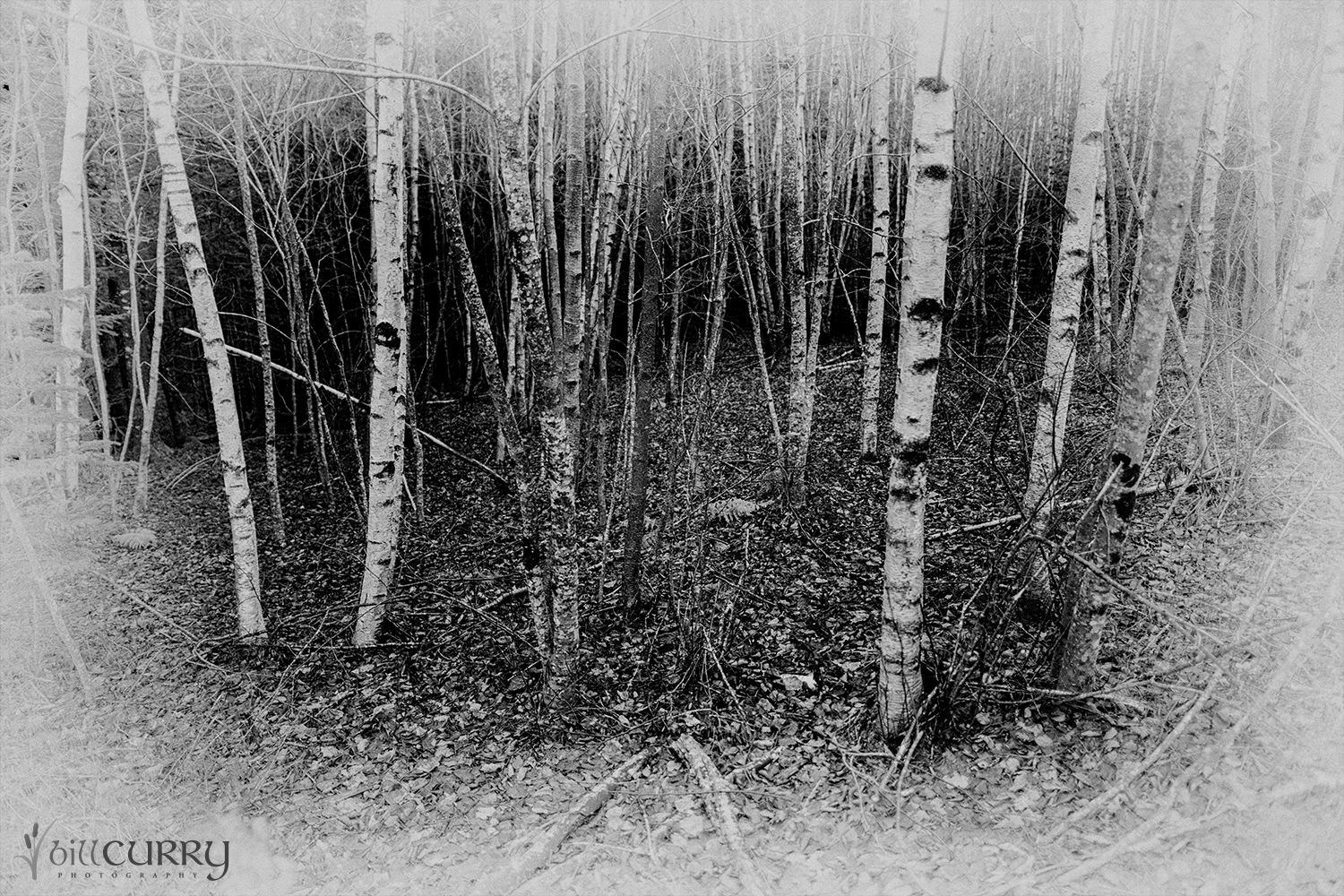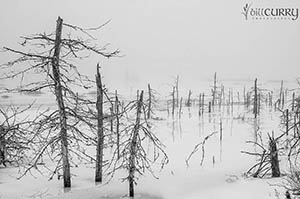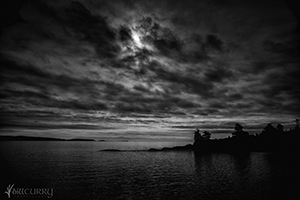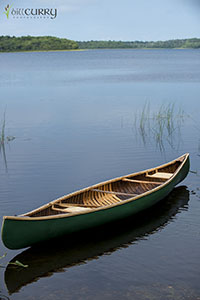
Birch Stand, Yarmouth County, NS
Mixed Birches
On a grey and gloomy day this week (I know it could have been any day in the last week!), I wandered around some back roads in Yarmouth County and found this stand of mixed birch trees. The white birch is a tree most folks can identify, as its white papery bark with black spots is known to many. The other birch in this week’s image is the yellow birch, a related species.
The white birch is very quick to come back after a forest is disturbed by fire or by human activity, but doesn’t live long. The white birch was favoured by indigenous people here in Nova Scotia, as the bark was great for starting fires, the wood burned well and the young stands were good browse for moose. The bark of the white birch was used in making canoes, as the bark on large white birches could be peeled off in sheets which could then be affixed with spruce or pine resin to the outer hull of a boat. The fact that the bark wraps around the birch tree instead of up and down made it much easier to work with, and it was commonly used in other items as well – one of my prized possessions is a handmade birch bark moose call a Mi’kmaq friend of mine made for me.
The yellow birch grows very slowly in boggy and rocky ground, but can live for a long time. The Mi’maq used the strong, small branches of the yellow birch for use as twine in making things like snowshoes, and the yellow birch was favoured by shipbuilders because its wood resisted rot in salt water. Even the most Canadian of items were fashioned preferentially from yellow birch – the oldest hockey stick known was made from a yellow birch!
In this photo, the young stand of birches is here because a road was built through the area and disturbed the forest edge. Birches are tough, and they are one native tree that will thrive in most areas of the Province. Even on our property along the wind blasted coast of the Bay of Fundy, we have several small stands of birch trees. Birds like chickadees and warblers love the small hardwood stands, as they make great perches within the mixed woodlot.
The next time you’re walking through our woods, have a look and see if you can find not just the showy white birch, but its cousin the yellow birch – and then think of the history and importance of these trees.
















































